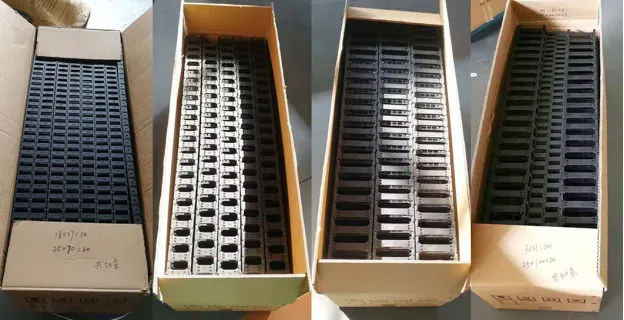Exploring the Benefits and Applications of 80mm Corrugated Conduit in Electrical Installations and Wiring Systems
Understanding 80mm Corrugated Conduit Applications, Benefits, and Best Practices
In the realm of electrical installations and telecommunications, conduit systems play a crucial role in protecting and routing wires and cables. Among the various types of conduits used, the 80mm corrugated conduit stands out, particularly for its versatility and durability. This article delves into its applications, benefits, and best practices for installation.
What is 80mm Corrugated Conduit?
Corrugated conduit is a flexible, tubular structure designed to house and protect electrical wiring. The term 80mm refers to the internal diameter of the conduit, which is approximately 80 millimeters (about 3.15 inches). This size is ideal for accommodating multiple cables, making it a popular choice in both residential and industrial settings.
The corrugated design not only enhances flexibility but also provides additional strength, making it resistant to various external factors such as moisture, chemicals, and physical impacts. This characteristic is particularly valuable in environments where conduits may be exposed to harsh conditions.
Applications of 80mm Corrugated Conduit
The 80mm corrugated conduit is used in a variety of applications, including
1. Electrical Installations This conduit is commonly employed in electrical systems to protect wiring from physical damage while also providing insulation against environmental factors.
2. Telecommunications In telecom setups, 80mm corrugated conduit is used to house data cables and fiber optics, ensuring a secure pathway for communication lines.
3. Industrial Settings Factories and manufacturing plants often utilize this conduit for managing electrical and control wiring, contributing to safer operational environments.
4. Outdoor Applications The durability and water resistance of corrugated conduit make it an excellent choice for outdoor installations, protecting wires from weather-related damage.
Benefits of Using 80mm Corrugated Conduit
80mm corrugated conduit

One of the primary benefits of using 80mm corrugated conduit is its flexibility. This feature allows for easy installation in various configurations, particularly in complex setups where space is limited or where multiple bends are required. Users can navigate corners and obstacles without compromising the integrity of the conduit.
Another advantage is its robust construction. The corrugated design enables the conduit to withstand significant mechanical stress and external hazards. Furthermore, this conduit is typically resistant to UV rays and moisture, which helps prolong its lifespan in outdoor applications.
Cost-effectiveness is another notable benefit. Corrugated conduits are often more affordable than rigid alternatives, and their lightweight nature can reduce shipping and handling costs. Additionally, the ease of installation associated with corrugated conduit can lead to lower labor costs.
Best Practices for Installation
To maximize the effectiveness and longevity of 80mm corrugated conduit, following best practices during installation is essential
1. Plan the Layout Prior to installation, carefully plan the conduit layout to minimize bends and ensure efficient routing of cables. This approach will facilitate easy maintenance and modifications in the future.
2. Use Proper Fittings Utilize appropriate fittings and connectors designed for corrugated conduits to maintain protection and prevent damage to the cables.
3. Secure the Conduit Ensure that the conduit is securely anchored to prevent movement, which can lead to wear and increased risk of damage over time.
4. Regular Inspection Periodically inspect the conduit for any signs of wear and tear. Prompt maintenance can help avoid potential issues down the line.
Conclusion
The 80mm corrugated conduit is an indispensable component in modern electrical and telecommunications infrastructure. Its flexibility, strength, and cost-effectiveness make it an ideal choice for a wide range of applications. By adhering to best practices during installation and maintenance, users can ensure the longevity and reliability of their conduit systems, ultimately safeguarding their electrical installations.








